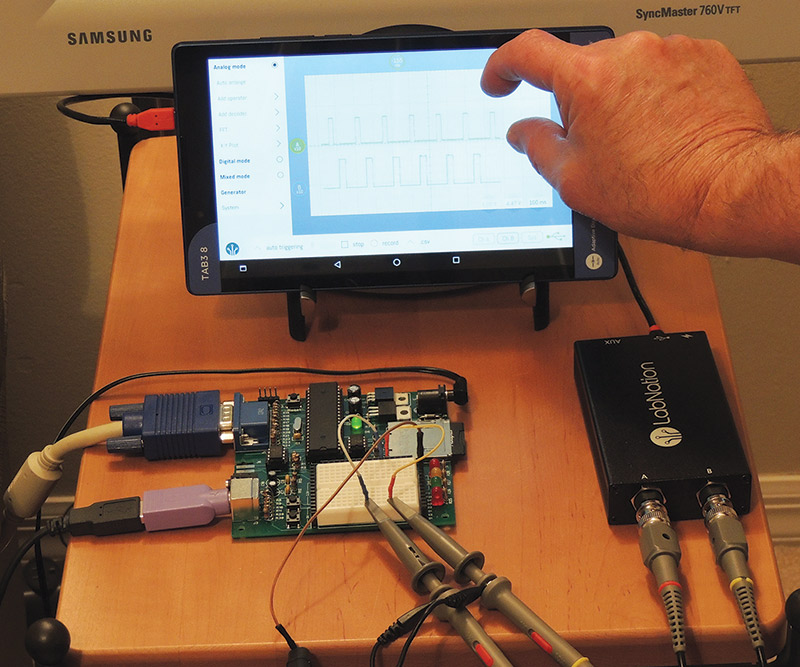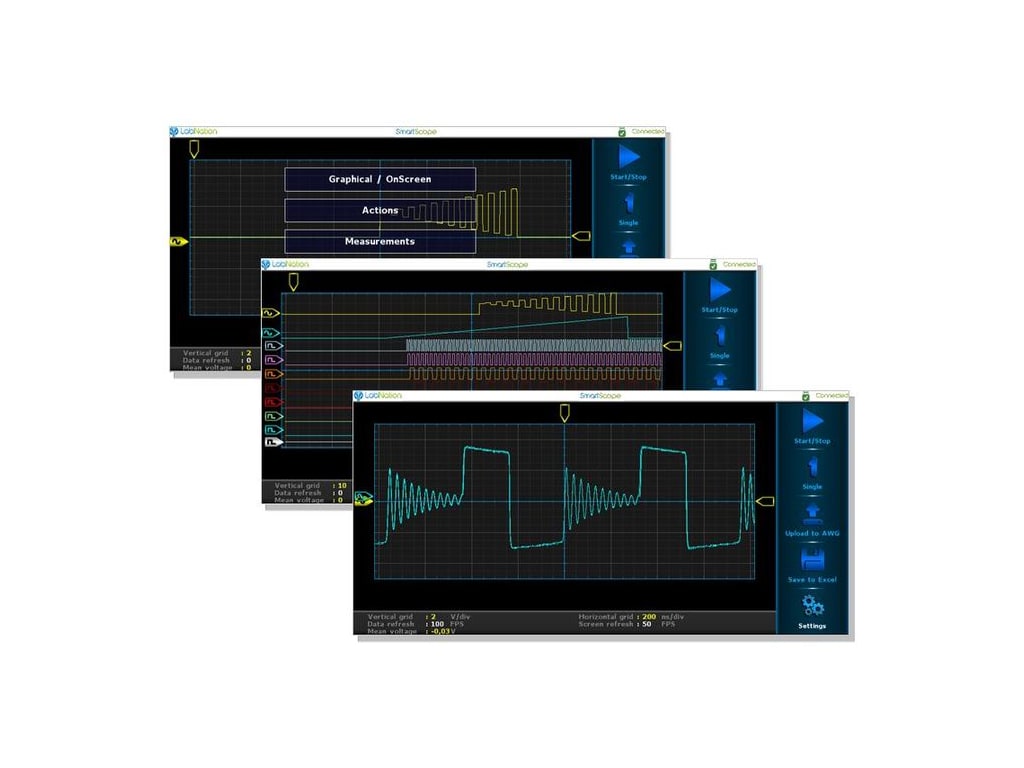
You can switch between DC and AC coupling, simply by clicking/tapping the wave indicator, and selecting the desired coupling mode. Eg: a 0.1V noise wave on top of a 12V power supply. This mode is quite often useful, eg in case you want to visualize a transient signal of low amplitude superposed on a large voltage. Eg: the same wave between 0V and 5V will be displayed between -2.5V and 2.5V. Doing so will cause the wave to be displayed, centered around 0V. Eg: a wave between 0V and 5V will be displayed as a wave between 0V and 5V.Īlternatively, you can choose the set a channel to AC coupling. This means that the voltages displayed will be the true, absolute voltages. By dragging the indicators, they will auto-snap to all grid divisions, including the 0-levelsīy default, each analog channel is set to DC coupling.By double-tapping the 0-level indicator, or double-tapping the horizontal trigger indicator.This can be done accurately in these ways: When using touch, you’ll often want to set the timebase or voltage offset to 0. Dragging the indicator has the benefit that they auto-snap to the grid divisions.ĭragging will also occur when, while pinching, you move both fingers in the same direction.

Using touch/mouse, you can drag either the wave (notice the faintly colored background behind the wave: this indicates the sensitive area!), its 0-level indicator or the horizontal trigger indicator. While zooming allows you to fit the signal on the screen, you’ll also want to position it to your liking. To do so, simply drag it up or down as shown in the image below: The image below shows how timebase zooming can be done using a touch screen:Īdditionally, the timebase can also be adjusted using the picking wheel at the bottom-right of the screen. The grid is split in 10 horizontal divisions, and the timespan of each division is displayed in the Timebase indicators, on the bottom-right of the screen. The grid can help you determine the timebase of your signal as well. This can be achieved using the following operations: To do so, simply drag them up or down as shown in the image below.ĭepending on whether you want to visualize a fast signal or a slow signal, you’ll want to set the timebase accordingly. The image below shows how touch-based voltage zooming on the green wave can be done:Īdditionally, the voltage can also be adjusted using the picking wheels at the bottom-right of the screen. Notice that each signal can have a different scaling factor, and such there is one indicator for each wave. The grid is split in 10 divisions, and the voltage of each division is displayed in the Voltage division indicators, on the bottom-right of the screen. The grid in the background can help you determine the voltage level or amplitude of your signal. Zooming in or out the voltage scale of the active wave is done through the following operations:
LABNATION SMARTSCOPE AMAZON HOW TO
See the image below on how to select the blue wave as active wave:Īlternative ways where the active wave will be selected automatically: Its 0-level indicator has a darker colorĬhanging active wave can be done in the following ways.You can easily see which wave is currently highlighted, as: Scaling and panning only affect the ‘active wave’ (the signal currently selected). Usually, this involves zooming out both in voltage (vertically) and on the timebase (horizontally) until you’re happy with the size of the signal, and then panning the wave to the area where you want it to be. Since the oscilloscope has pretty large input range, this will involve some scaling and panning depending on the signal. When applying a signal to the inputs of the oscilloscope connectors, you will want the signal to be displayed nicely on the screen. This image can be used as reference for the rest of this text.

The key parts of the main screen are shown on the image below. Whenever you are in a different mode, and want to return to the oscilloscope mode, simply select it at the top of the main menu: 5.2 Changing between rising/falling/any edgeīy default, upon startup the SmartScope app will be in Analog mode.


 0 kommentar(er)
0 kommentar(er)
